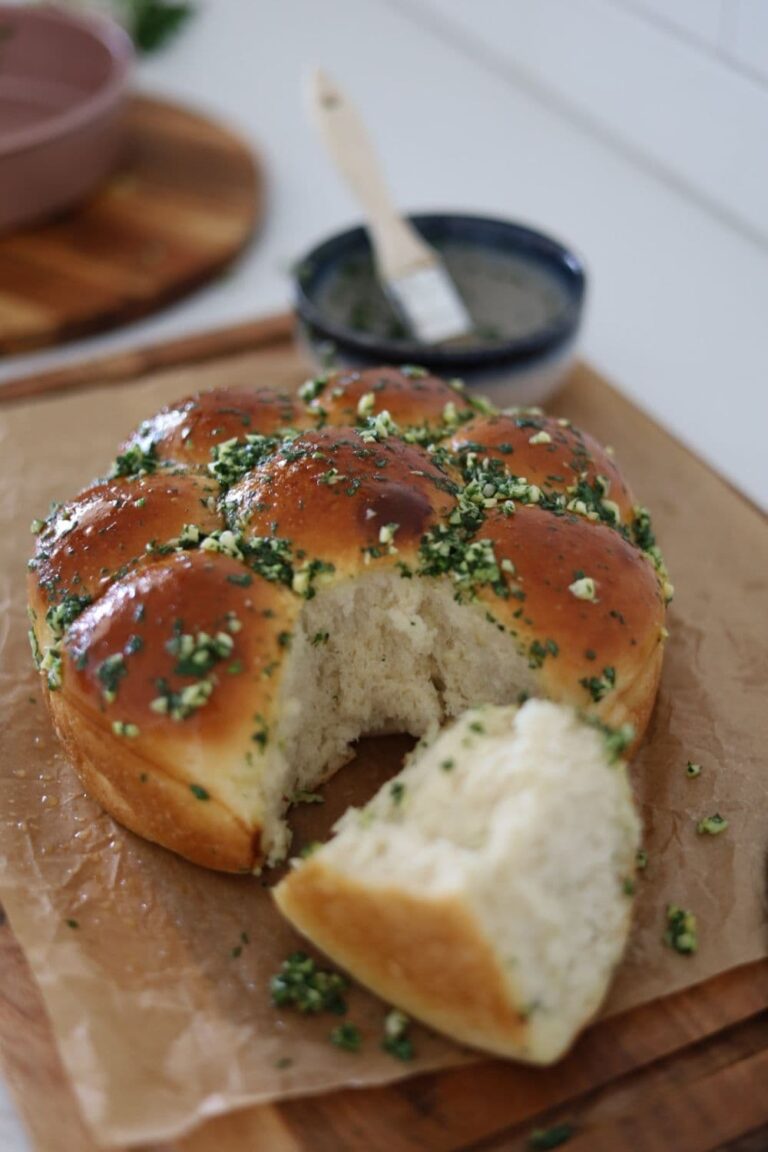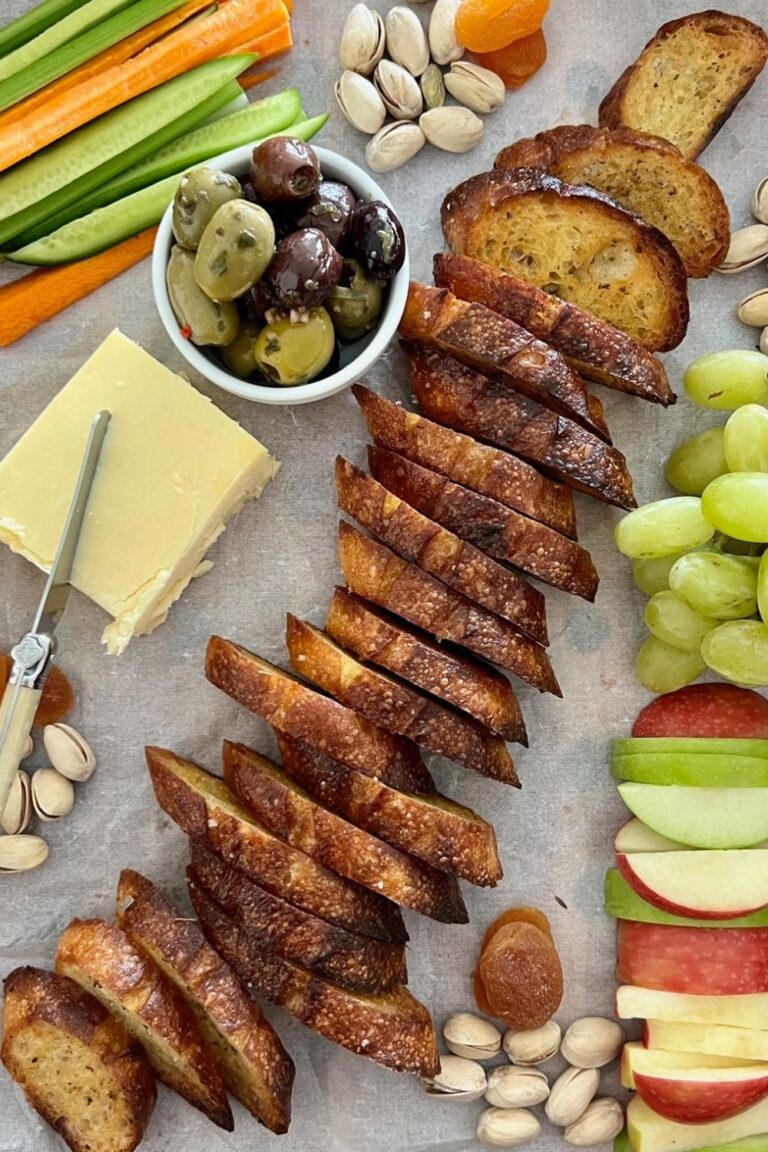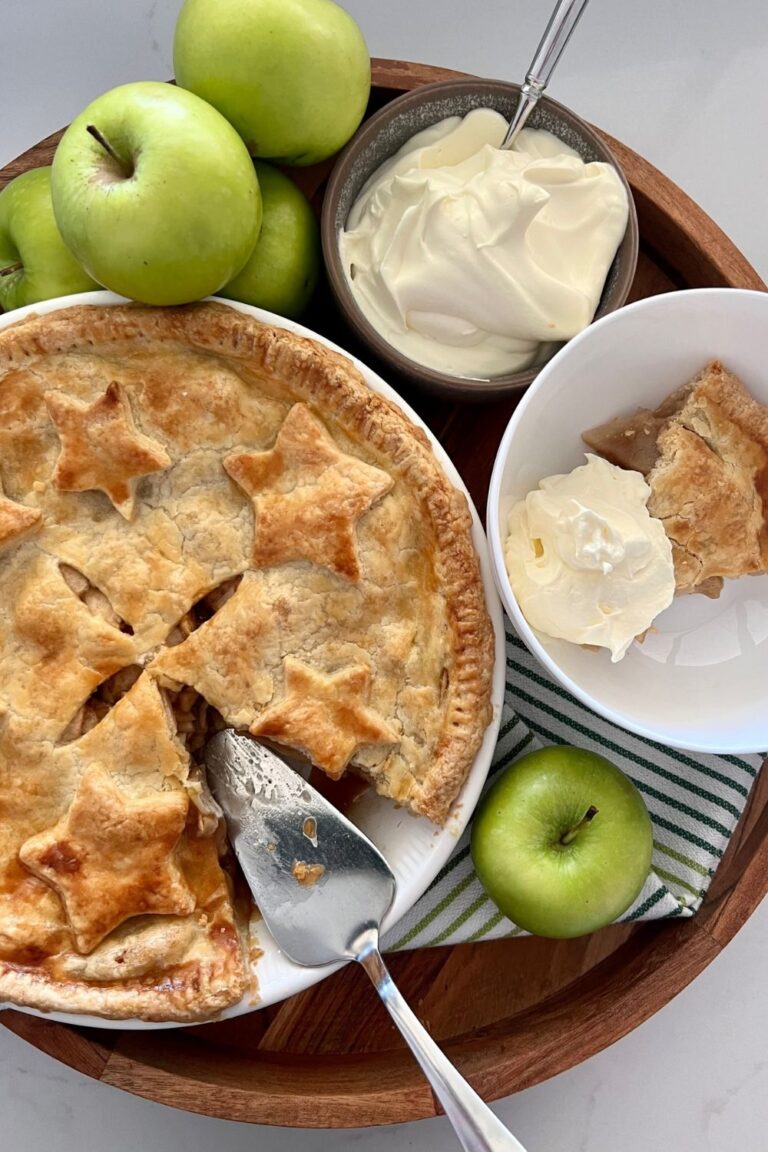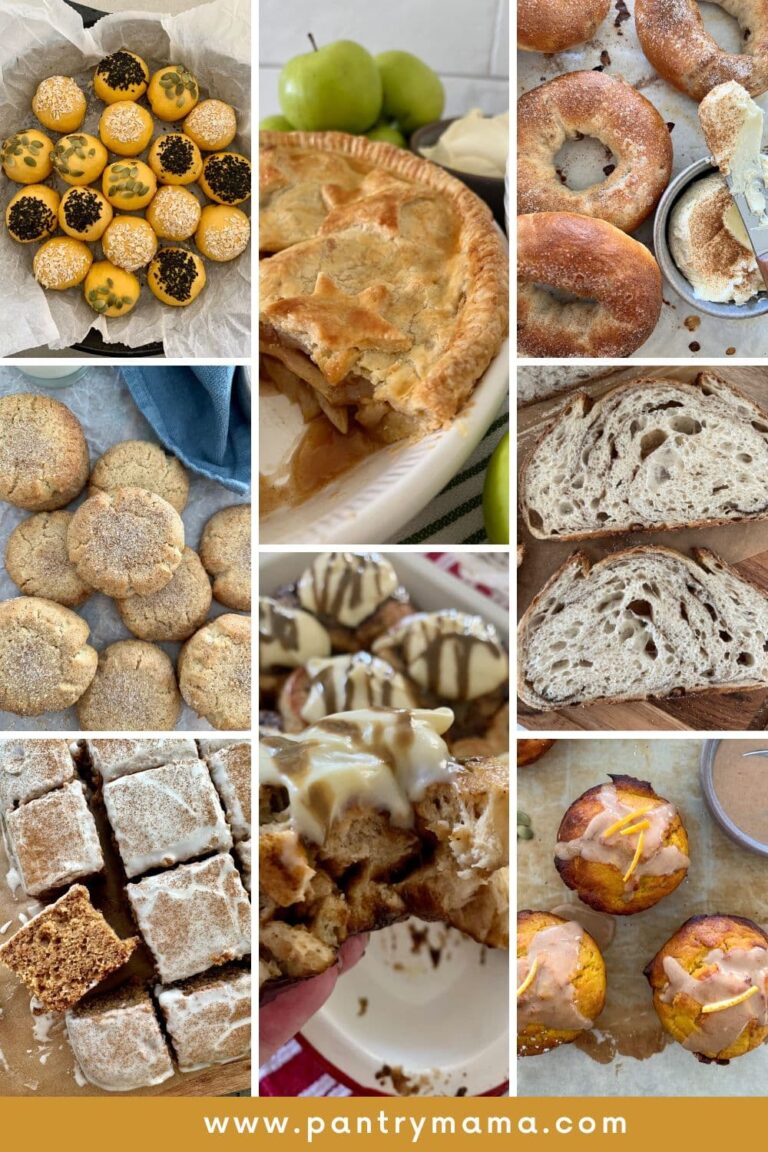Best Fried Sourdough Donuts [with vanilla glaze]
This post may contain affiliate links.
Fried sourdough donuts are like nothing you've ever had before. Seriously, they are so much better than the best donut you've ever had. I promise! My kids would eat these every day if I let them ... what I don't want them to know is they are actually really easy! The worst bit is the frying, but we now have a permanent deep fryer set up outside, so I don't really have any excuses!
Now if you don't like deep frying, or you don't want to eat fried foods, I highly recommend these sourdough baked donuts - they are super tasty without the need for oil.
But while you've got the deep fryer out, you might also like to try these sourdough banana fritters and sourdough elephants ears.
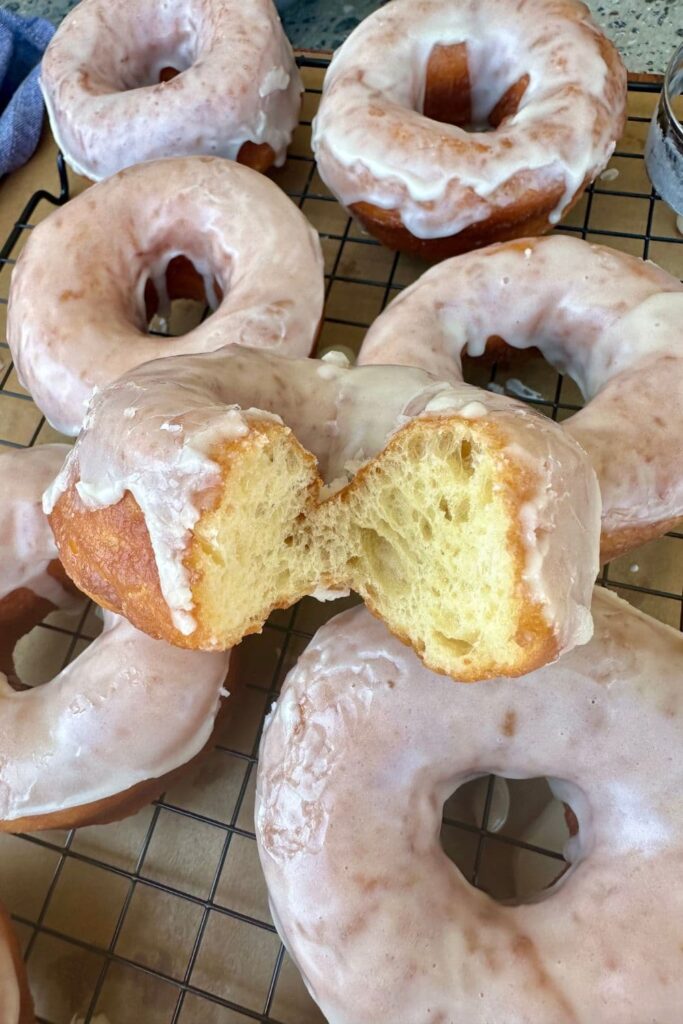
Why You'll Love This Recipe!
- Naturally Leavened - these fried sourdough donuts are naturally leavened using your active sourdough starter giving them a delightful sourdough tang which matches perfectly with the rich, sweetness you've come to expect from fried donuts.
- So Versatile! - you can enjoy these sourdough donuts in so many different ways! Coat them in cinnamon sugar, drizzle them in glaze or fill them with custard or jam! I've added lots of ideas at the end of the post.
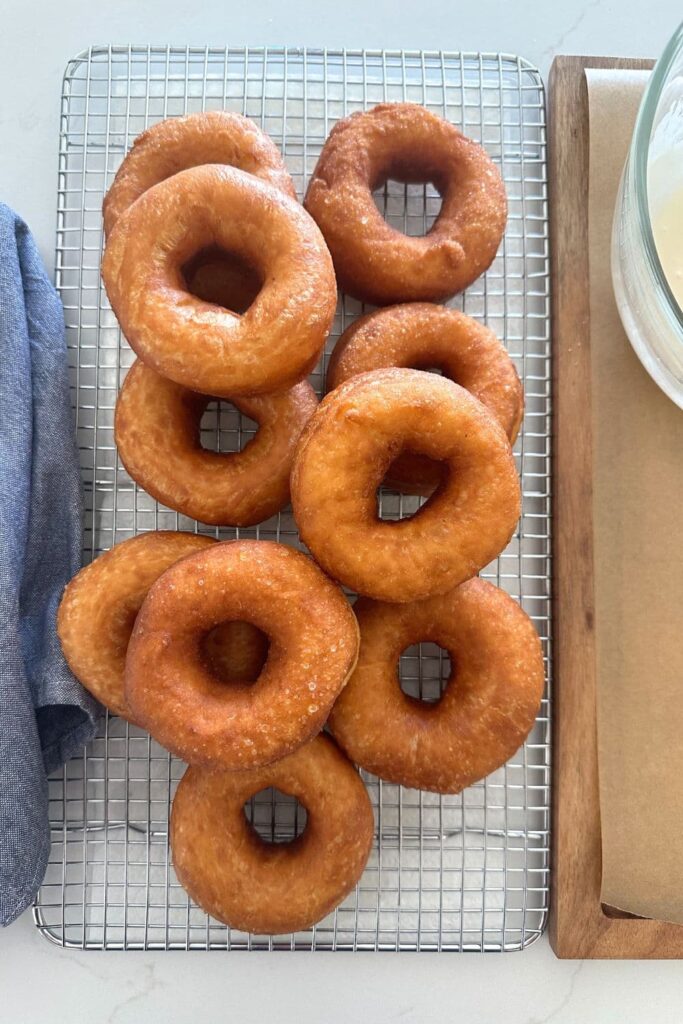
Bulk Fermentation & Proofing Time
I wanted to make a particular note of the bulk fermentation and proofing time for this recipe. This dough is very enriched, in that it contains egg yolks, buttermilk and butter. Enriched dough takes a long time to bulk ferment, even if your sourdough starter is amazingly active.
I usually put my sourdough donut dough into my bread proofer to keep it at a steady warm temperature (around 24 to 26C/75 - 79F depending on the outside temp). Once the donuts are cut and shaped, I put a damp kitchen towel over them and set my oven to 30C (86F) and proof them that way (my oven doesn't get to 30C inside but that is the lowest setting it has).
You'll also find these take quite a while to proof and get puffy after you cut them. The wait is totally worth it though - I just thought it's worth mentioning so you can be prepared for it (and not think that you've done something wrong or your starter isn't working).
If you're looking to understand how your sourdough starter works, this post on the science of sourdough is a great read.
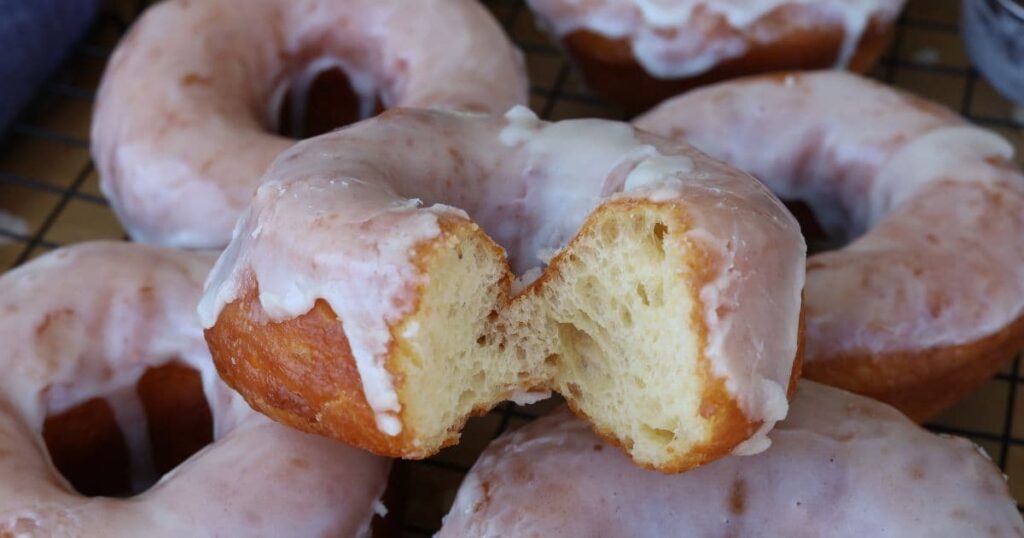
How To Make Fried Sourdough Donuts with Vanilla Glaze
The easiest way to make sourdough donuts is using a stand mixer - but it is totally possible to do this recipe by hand. For this reason, I've included 3 different versions of instructions to mix & knead the dough.
With frying the donuts, I've used a deep fryer that regulates the temperature at 180C. You can use a large pot like a Dutch Oven or a skillet (you can see me use this when making sourdough banana fritters).
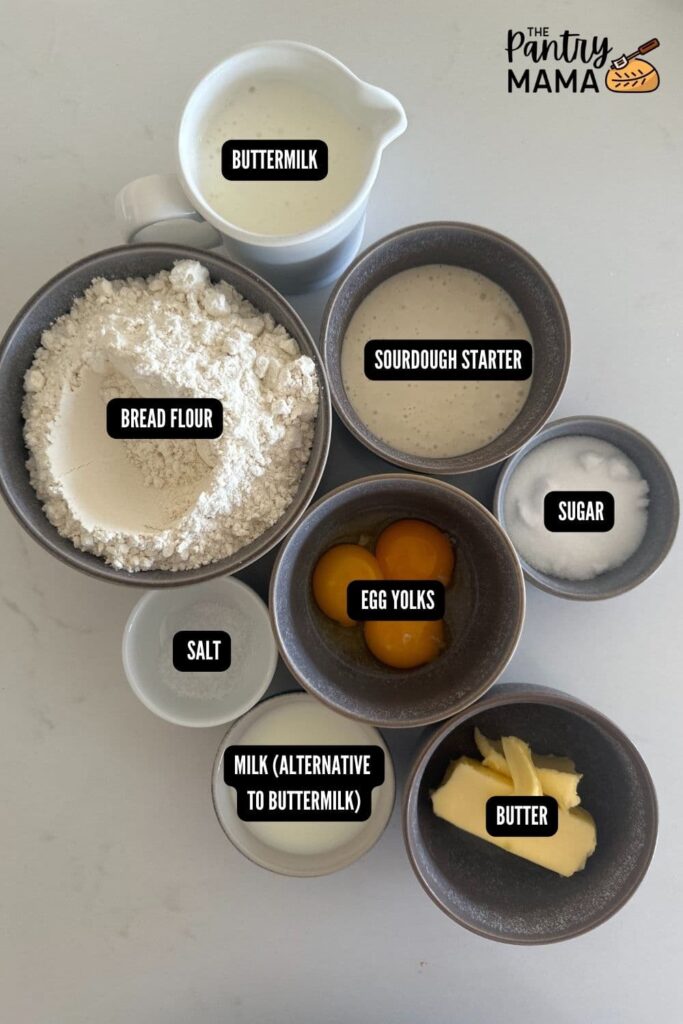
How To Mix & Knead Using a Stand Mixer
It's so easy to make this dough using your stand mixer (just like making this stand mixer sourdough bread).
Add the sourdough starter, buttermilk, egg yolks and sugar to the bowl of your stand mixer. Mix on low speed (with the paddle attachment) until all of the ingredients are well combined.
Change to the dough hook attachment, then add the bread flour, butter and salt to the liquid ingredients and knead using your dough hook until a soft, elastic dough forms. The dough will be tacky, but not sticky and shouldn't stick to your fingers.
How To Mix & Knead Using a Thermomix
Add all ingredients to the bowl and use the knead function to knead for around 4 to 5 minutes or until the dough is soft and elastic. It should be tacky, but not sticky.
I use my Thermomix for many different recipes including this Thermomix sourdough bread and these sourdough goldfish crackers.
How To Mix & Knead By Hand
Mixing by hand takes a little elbow grease, but it's totally doable. Don't be frightened when you add the butter, it will look like a mess, but with lots of kneading, the butter will go into the dough.
To a large mixing bowl, add the sourdough starter, buttermilk, egg yolks and sugar. Use a whisk to whisk the ingredients until they form a foamy batter and the sugar is dissolved. Add the bread flour and salt to the liquid ingredients and use a spatula to bring the ingredients into a shaggy dough.
Tip the dough out onto the counter and knead for around one to two minutes, or until the dough starts to become smooth and supple.
Allow the dough to rest for around 5 minutes, then add the butter in small amount, kneading until it's all absorbed into the dough. The dough should be soft and elastic. It will be tacky, but not sticky and shouldn't stick to your fingers once it's kneaded sufficiently.
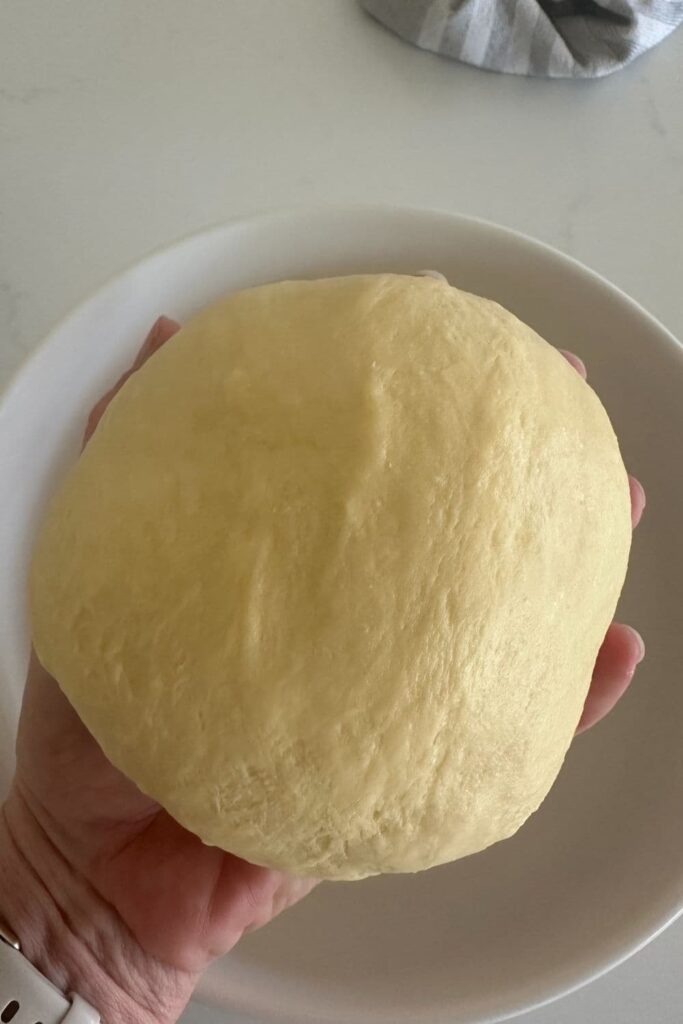
Bulk Fermentation
Once the dough has been kneaded using whatever method you prefer, place the dough back into a bowl and cover with plastic wrap or an elastic food cover. Allow the dough to bulk ferment at room temperature until it rises by around 50%.
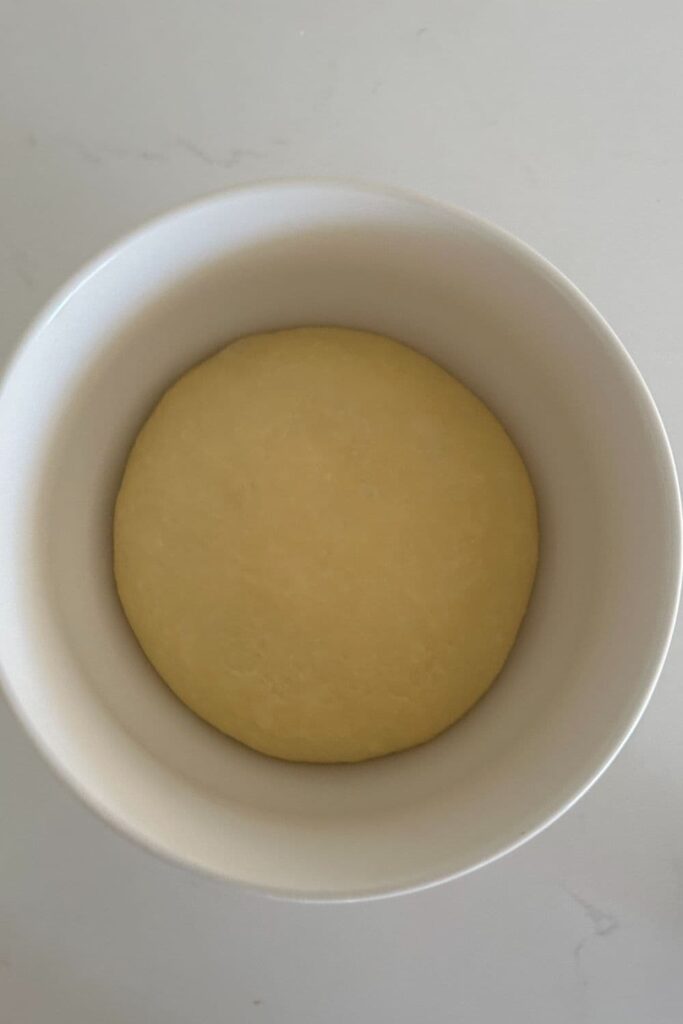
Cutting Sourdough Donuts for Frying
Once the dough has risen, tip it out onto the counter and roll it out into a rough rectangle/square - around 25cm x 25cm (10" x 10").
Use a donut cutter to cut out your donuts (dip the cutter into flour first). If you don't have a donut cutter a glass, wide mouth jar or even a biscuit cutter is a good alternative.If you want donuts that you can fill, it's best to use a biscuit cutter to get the round shape without the hole.I don't use the donut holes, I add them back into the dough when I re roll it to cut out more donuts.
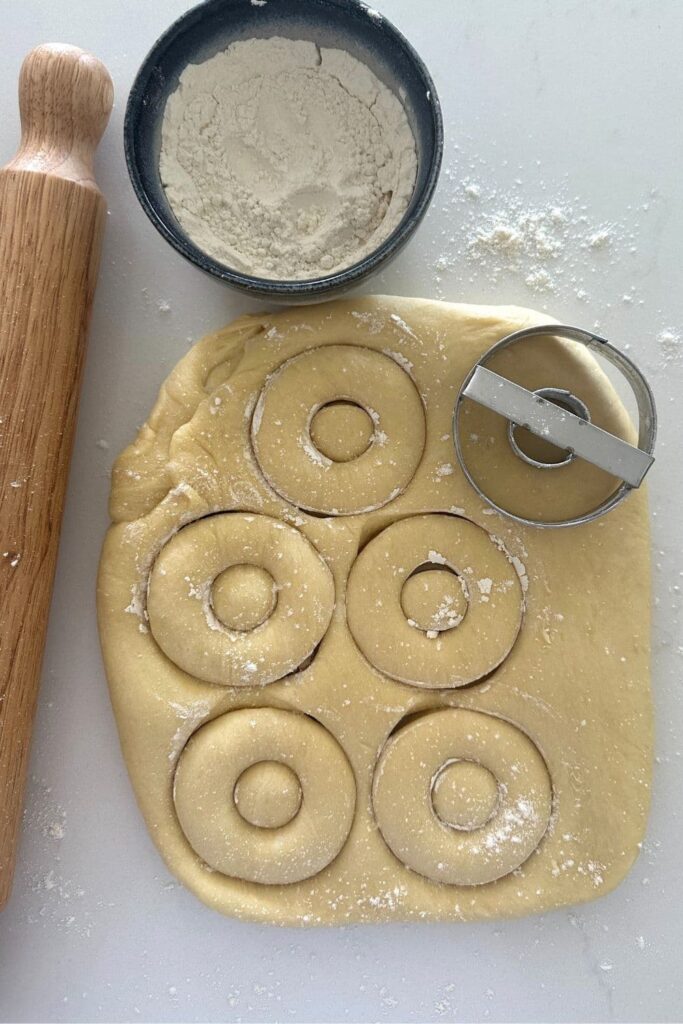
Place the cut donuts onto a cookie sheet or board lined with parchment paper and cover with a damp cloth. Allow them to proof until they're full and puffy.
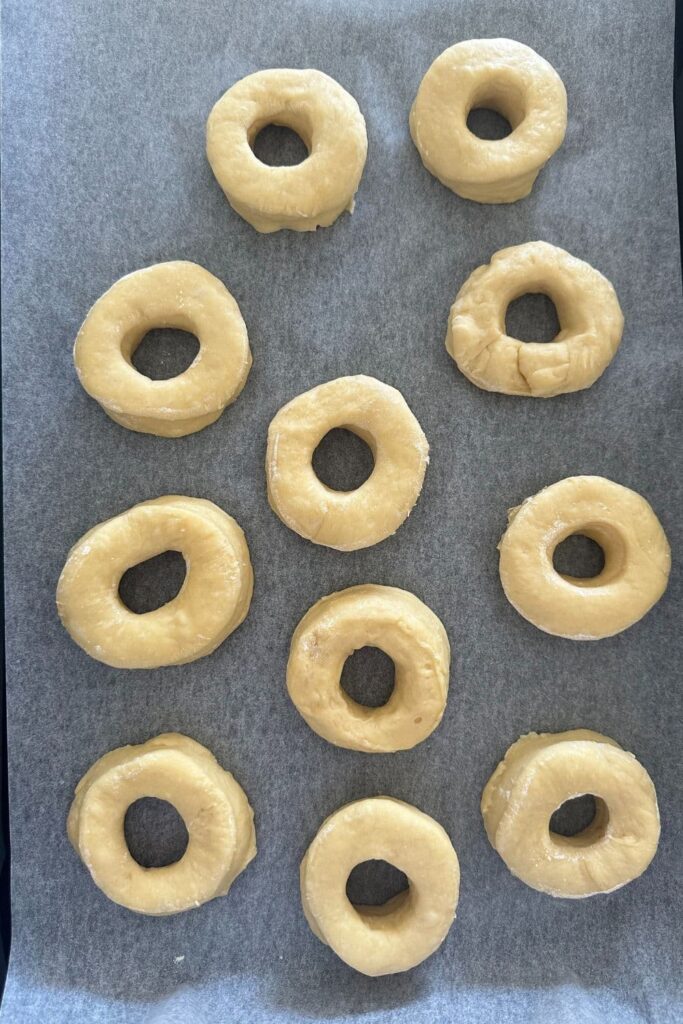
Frying Sourdough Donuts
When you're ready to fry the donuts, heat up your oil to 180C (approx. 350F).I have used a deep fryer which regulates the temperature for me. You can use a Dutch Oven or skillet filled with oil if you don't have a deep fryer (see notes on type of oil to use below).
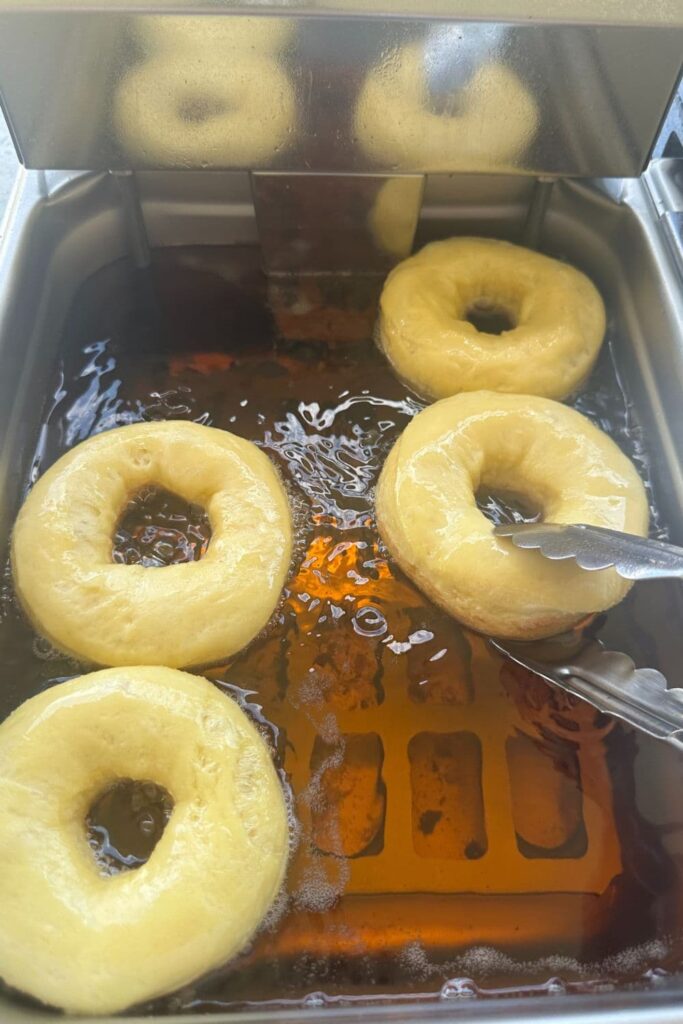
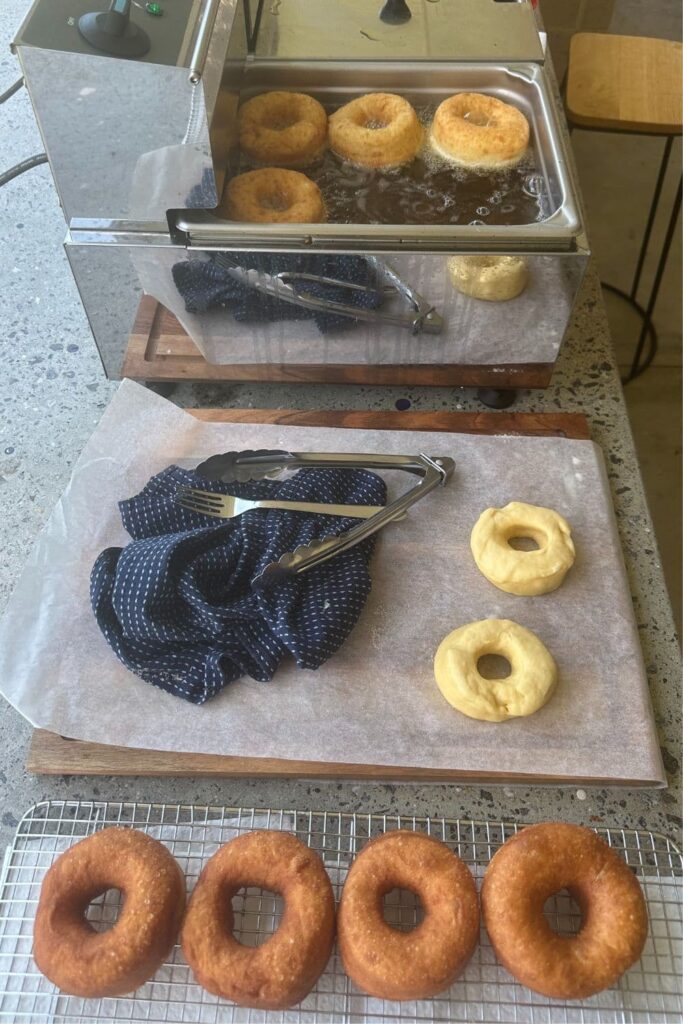
Add the donuts to the oil in batches - around 3 or 4 at a time. Fry for around 2 minutes on each side before removing from the oil and draining on some paper towel.If you are using cinnamon sugar to coat, you'll want to dip them straight into this out of the oil.
Making the Vanilla Glaze
When the donuts have cooled a little bit, mix the glaze ingredients together and stir until smooth. Dip each donut into the glaze and then onto a wire rack to allow the glaze to set.
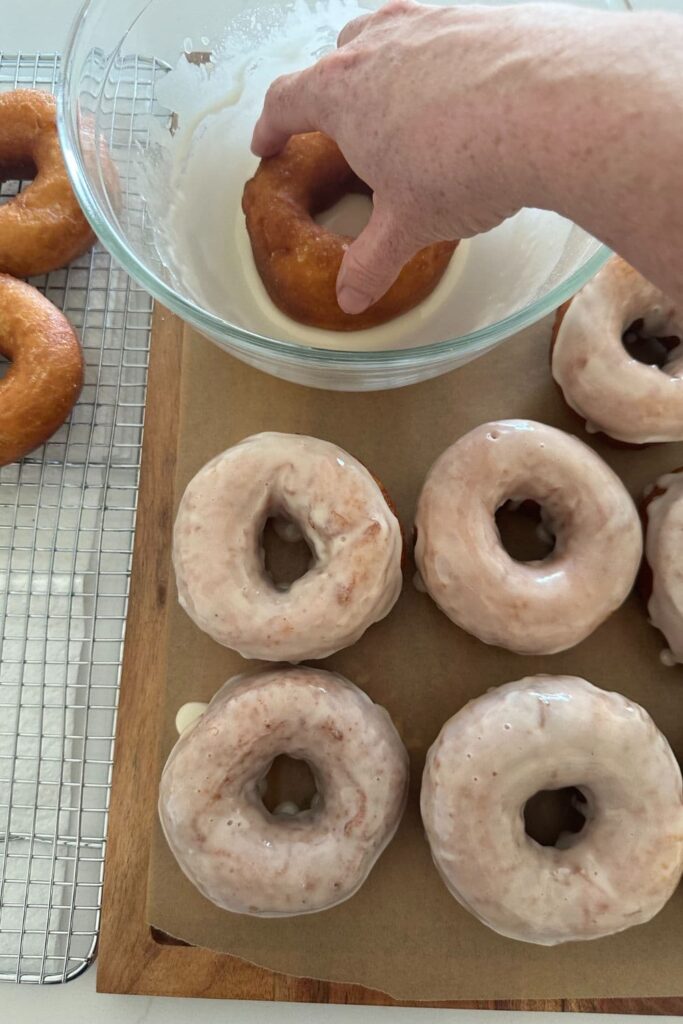
Best Tips for Successful Fried Sourdough Donuts
Buttermilk - if you don't have any buttermilk, just use 180g of milk with a dash of vinegar. Allow it to sit for 5 minutes to thicken before adding to the donut mixture.
Donut Cutter - If you don't have a donut cutter, use a biscuit cutter (especially if you want to fill the donuts after they're fried). A wide mouth mason jar, glass or small bowl can be used as an alternative. A bottle cap or lid can be used to cut out the holes.
Donut Holes - it's up to you if you use the donut hole dough. Some people like to fry them up and have "donut holes". I just add them back to the dough when I re roll it to cut more donuts. You might even get 11 donuts if you do this.
Oil for Frying - I fried these donuts in a deep fryer that regulated the temperature at 180C. I used Rice Bran Oil to fry them in (mainly because it was already in the deep fryer and it's too hard to empty it out and change it just for one recipe) but they came up beautifully and weren't greasy. You can use vegetable oil, canola oil, coconut oil or any oil you like to deep fry in.
Baker's Timeline for Fried Sourdough Donuts
I've put this timeline together as an example of a timeline you could follow for making these sourdough donuts. Please note that bulk fermentation and proofing times will be different depending on your sourdough starter.
THE NIGHT BEFORE
9pm - Feed sourdough starter (1:3:3 ratio so it peaks in the morning).
THE NEXT DAY
7am - Mix the sourdough donut dough and leave at room temperature to bulk ferment. You need it rise 50% before you cut and shape the donuts.
1pm - Use a donut cutter to cut out the donut shapes and arrange the a parchment lined cookie sheet. Cover with a damp kitchen towel and leave them to proof and get puffy.
5pm - Fry those donuts!
You can use the fridge to further manipulate the timeline if you want to. The shaped donuts can be placed into the fridge to extend the proofing time. Allow them to get to room temperature and be nice and puffy before you fry them.
You can read more about creating sourdough timelines here.
Flavor Variations for Fried Sourdough Donuts
In the photos, you can see I coated my fried sourdough donuts with a vanilla glaze, but there are so many other ways you can serve and eat these sourdough donuts! Here are a few other things you can try:
- Coat them in cinnamon sugar when hot straight out of the oil.
- Use a biscuit cutter to cut out the donuts (without a hole) and fill them with nutella, raspberry jam or custard once cooled.
- Coat them with a chocolate or strawberry glaze and sprinkles.
- Strawberry Glaze - add 250g of powdered sugar, a pinch of salt, 60g of milk and a tablespoon of strawberry jam (add a little pink coloring if you want it really pink).
- Chocolate Glaze - add 250g of powdered sugar, a pinch of salt, 60g of milk and a tablespoon of cocoa powder.
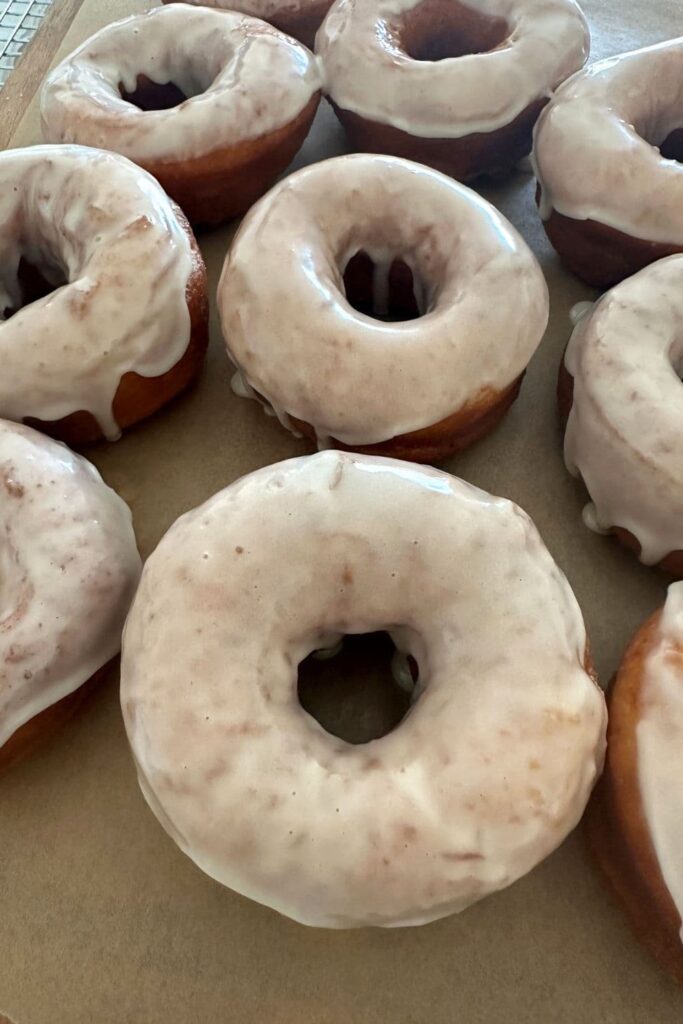
Can I Make A Sourdough Discard Version of Fried Sourdough Donuts?
Absolutely - it's easy to turn these sourdough donuts into sourdough discard donuts! Add 100g of sourdough discard instead of fed active starter and add 7g of yeast to the mixture as well.
You will of course need to shorten the rising time for these donuts if you are using yeast plus sourdough discard.
You can learn more about adding sourdough discard to any recipe here.


Fried Sourdough Donuts with Vanilla Glaze
Equipment
- Deep Fryer or Dutch Oven to fry
- Donut Cutter
Ingredients
Sourdough Donuts
- 100 g Sourdough Starter
- 180 g Buttermilk (see notes for milk alternative)
- 3 Egg Yolks
- 40 g Sugar
- 400 g Bread Flour
- 60 g Butter
- 5 g Salt
Vanilla Glaze
- 125 g Powdered Sugar
- 30 g Milk
- 5 g Vanilla Extract
Instructions
- The easiest way to make sourdough donuts is using a stand mixer - but it is totally possible to do this recipe by hand. For this reason, I've included 3 different versions of instructions to mix & knead the dough.
- MIX & KNEAD USING A STAND MIXER - it's so easy to make this dough using your stand mixer. Add the sourdough starter, buttermilk, egg yolks and sugar to the bowl of your stand mixer. Mix on low speed (with the paddle attachment) until all of the ingredients are well combined.Change to the dough hook attachment, then add the bread flour, butter and salt to the liquid ingredients and knead using your dough hook until a soft, elastic dough forms. The dough will be tacky, but not sticky and shouldn't stick to your fingers.MIX & KNEAD USING A THERMOMIX - add all ingredients to the bowl and use the knead function to knead for around 4 to 5 minutes or until the dough is soft and elastic. It should be tacky, but not sticky.MIX & KNEED BY HAND - mixing by hand takes a little elbow grease, but it's totally doable. Don't be frightened when you add the butter, it will look like a mess, but with lots of kneading, the butter will go into the dough.To a large mixing bowl, add the sourdough starter, buttermilk, egg yolks and sugar. Use a whisk to whisk the ingredients until they form a foamy batter and the sugar is dissolved. Add the bread flour and salt to the liquid ingredients and use a spatula to bring the ingredients into a shaggy dough.Tip the dough out onto the counter and knead for around one to two minutes, or until the dough starts to become smooth and supple.Allow the dough to rest for around 5 minutes, then add the butter in small amount, kneading until it's all absorbed into the dough.The dough should be soft and elastic. It will be tacky, but not sticky and shouldn't stick to your fingers once it's kneaded sufficiently.
- Once the dough has been kneaded using whatever method you prefer, place the dough back into a bowl and cover with plastic wrap or an elastic food cover. Allow the dough to bulk ferment at room temperature until it rises by around 50%.
- Once the dough has risen, tip it out onto the counter and roll it out into a rough rectangle/square - around 25cm x 25cm (10" x 10").
- Use a donut cutter to cut out your donuts (dip the cutter into flour first). If you don't have a donut cutter a glass, wide mouth jar or even a biscuit cutter is a good alternative. If you want donuts that you can fill, it's best to use a biscuit cutter to get the round shape without the hole.I don't use the donut holes, I add them back into the dough when I re roll it to cut out more donuts.
- Place the cut donuts onto a cookie sheet or board lined with parchment paper and cover with a damp cloth. Allow them to proof until they're full and puffy.
- When you're ready to fry the donuts, heat up your oil to 180C (approx. 350F). I have used a deep fryer which regulates the temperature for me. You can use a Dutch Oven or skillet filled with oil if you don't have a deep fryer (see notes on type of oil to use below).
- Add the donuts to the oil in batches - around 3 or 4 at a time. Fry for around 2 minutes on each side before removing from the oil and draining on some paper towel.If you are using cinnamon sugar to coat, you'll want to dip them straight into this out of the oil.
- When the donuts have cooled a little bit, mix the glaze ingredients together and stir until smooth. Dip each donut into the glaze and then onto a wire rack to allow the glaze to set.
Notes
Nutrition


